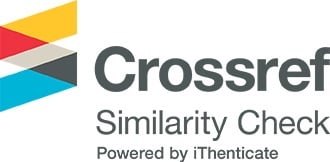Khảo sát mức độ hài lòng của người bệnh đột quỵ khi được can thiệp vật lý trị liệu tại các cơ sở y tế công lập trong địa bàn Thành phố Hồ Chí Minh
Các tác giả
DOI: https://doi.org/10.59294/HIUJS.34.2025.738Từ khóa:
tai biến, mức độ hài lòng, vật lý trị liệuTóm tắt
Tổng quan: Đột quỵ để lại nhiều di chứng về chức năng cho người bệnh. Vật lý trị liệu (VLTL) là phương pháp quan trọng trong việc phục hồi cuộc sống người sống sót sau đột quỵ. Nghiên cứu khảo sát mức độ hài lòng của người bệnh đột quỵ ngoại trú khi được can thiệp vật lý trị liệu tại ba cơ sở y tế công lập trong địa bàn Thành phố Hồ Chí Minh gồm: Bệnh viện Nhân Dân Gia Định, Bệnh viện Lê Văn Thịnh và Trung tâm Chỉnh hình và Phục hồi chức năng Thành phố Hồ Chí Minh (TP.HCM). Phương pháp: Sử dụng bảng câu hỏi PTOPS được dịch thuật qua tiếng Việt phỏng vấn 1:1 trực tiếp. Kết quả: 30 người sống sót sau đột quỵ (SSSĐQ) được phỏng vấn trong đó có 21 nam và 9 nữ, 66.67% người có độ tuổi từ 60 trở lên. Kết quả các đối tượng cảm thấy hài lòng với những trải nghiệm khi giao tiếp với người điều trị và quá trình luyện tập tại Khoa VLTL. Đối tượng cũng cảm thấy hài lòng về nơi bố trí của phòng tập VLTL, thuận tiện cho người bệnh mắc nhiều khiếm khuyết về vận động. Đối tượng cảm thấy hài lòng trong khoản chi phí cho việc điều trị VLTL, chất lượng chăm sóc phù hợp với chi phí. Người bệnh mong muốn được người điều trị giao tiếp nhiều hơn và có nhiều thời gian điều trị hơn. Người bệnh mong muốn được tập cố định bởi một nhà điều trị. Kết luận: Hầu hết người bệnh đột quỵ được điều trị ngoại trú vật lý trị liệu đều cảm thấy hài lòng với dịch vụ được cung cấp về chi phí, vị trí tập luyện. Họ mong muốn được có nhiều thời gian, chia sẻ và lắng nghe nhiều hơn từ người chuyên viên của mình.
Abstract
Overview: Stroke causes many functional disabilities for survivors. Physical therapy plays an important role in rehabilitation to improve the patient's life. This study aims to survey the satisfaction level of outpatient stroke patients receiving physical therapy intervention at three public health facilities in Ho Chi Minh City: Nhan dan Gia Dinh Hospital, Le Van Thinh Hospital, and Ho Chi Minh City Orthopaedic and Rehabilitation Centre. Method: The PTOPS questionnaire was translated into Vietnamese with Cronbach's Alpha reliability in the range of 0.779 - 0.884 (meeting the conditions for using the questionnaire for participants) direct interview within 10 minutes. Results: 30 stroke survivors were interviewed, including 21 men and 9 women, 66.67% of participants were 60 years old or older. The results showed that the participants felt satisfied with their experiences when communicating with the therapists and the training process at the Physical therapy department. They are also satisfied with the location and facilities which is convenient for patients with many motor disabilities. The cost of treatment and quality of care was appropriate, and the therapist did not ask them to pay more over the insurance. Conclusion: Most stroke patients treated as outpatients when receiving Physical Therapy intervention were satisfied with the current service. Patients want more communication and more treatment time. Patients want to be treated by a certain therapist during the whole process.
Tài liệu tham khảo
[1] Murphy SJ and Werring DJ, "Stroke: causes and clinical features," Medicine (Abingdon), vol. 48, no. 9, pp. 561-566, 2020.
DOI: https://doi.org/10.1016/j.mpmed.2020.06.002[2] N. T. Duy, “Tiên lượng phục hồi chức năng ở người bị Tai Biến Mạch máu não,” Y học TP.HCM, 2018.
[3] Rudd A., Bowen A., James M., et al., National clinical guideline for stroke. 5th ed, London: Royal College of Physicians, 2016.
[4] T. Breanna, S. S. Worrall and Linda, “What do people with aphasia think about their health care? Factors influencing satisfaction and dissatisfaction,” Aphasiology, vol. 27, no. 8, p. 972-991, 2013.
DOI: https://doi.org/10.1080/02687038.2013.811211[5] Olaleye, O. A., Hamzat, T. K. and Akinrinsade, M. A., “Satisfaction of Nigerian stroke survivors with outpatient physiotherapy care,” Physiotherapy Theory and Practice, vol. 33, no. 1, p. 41-51, 2016.
DOI: https://doi.org/10.1080/09593985.2016.1247931[6] Peterson W.E., Charles C., DiCenso A. and Sword W, “The Newcastle Satisfaction with Nursing scale: A valid measure of maternal satisfaction with inpatient postpartum nursing care,” Journal of Advanced Nursing, vol. 52, no. 6, p. 672-681, 2005.
DOI: https://doi.org/10.1111/j.1365-2648.2005.03634.x[7] Porter J., Bowden D.K., Economou M. and Cappellini M. D., “Health-related quality of life, treatment satisfaction, adherence and persistence in β- Thalassemia and Myelodysplastic Syndrome patients with iron overload receiving Deferasirox: Results from the EPIC Clinical Trial,” Anemia, 2012.
DOI: https://doi.org/10.1155/2012/297641[8] R. Mehta and K. Chinthapalli, “Glasgow coma scale explained,” BMJ, 2019.
DOI: https://doi.org/10.1136/bmj.l1296[9] S. E. Roush and R. J. Sonstroem, “Development of the Physical Therapy Outpatient Satisfaction Survey (PTOPS),” Physical Therapy, vol. 79, no. 2, p. 159-170, 1999.
DOI: https://doi.org/10.1093/ptj/79.2.159[10] M. Cavalheiro, M. Cabri and L. Ferreira, “Cross-Cultural Adaptation and Validation of the Portuguese Version of the Physical Therapy Outpatient Satisfaction Survey,” Portuguese Journal of Public Health, vol. 35, no. 3, p. 214-219, 2018.
DOI: https://doi.org/10.1159/000486250[11] Vanti C., Bonetti F., …and Pillastrini P., “Cross-cultural adaptation and validation of the Physical Therapy Outpatient Satisfaction Survey in an Italian musculoskeletal population,” BMC Musculoskeletal Disorders, 2013.
DOI: https://doi.org/10.1186/1471-2474-14-125Tải xuống
Tải xuống: 151











